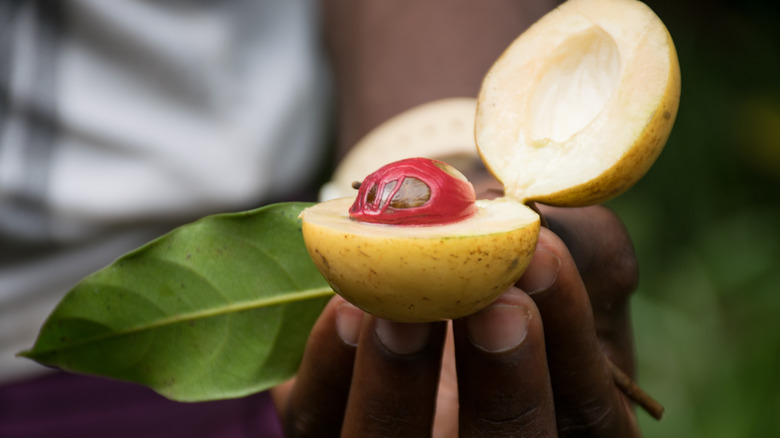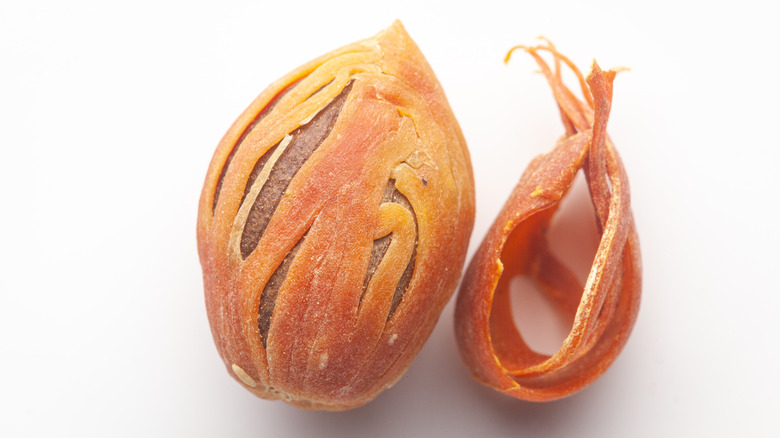Why Mace Is The Ideal Substitute For Nutmeg
Nutmeg has a very distinct flavor, one that's considered a must-have in Western cooking for pumpkin pies, eggnog, gingerbread, creamy custards, rice puddings, or béchamel sauces. It's generally one of those "dash to the grocery store" moments when you suddenly realize the pantry is nutmeg-bare. There are, begrudgingly, a few substitutes, including ginger, cloves, allspice, and cinnamon. However, the one that's the hands-down best substitute for nutmeg in any recipe is mace.
Mace is as close as you'll ever get to nutmeg and for more reason than the fact that mace brings out the flavor of peaches. Mace comes from the same evergreen nutmeg tree, botanically known as Myristica fragrans, and even the same seed, making them truly sister spices. Nutmeg actually is the seed of the nutmeg fruit, while mace is its lacy outer cloak; technically, its membrane, called an aril. Mace is bright red when fresh and becomes a yellowish peach color as it dries for at least 10 days and up to two months.
The flavor of mace is similar to nutmeg and it's generally safe to use it in a 1:1 ratio when substituting mace for nutmeg in a recipe. However, there are some subtle differences in the flavor and pungency, so consider that and adjust accordingly per personal taste. Mace can have a pronounced upfront piquancy similar to nutmeg but also come off as softer, toastier, nuttier, and with a less obvious sweetness. It's been described as having hints of black pepper and cinnamon.
Cooking with mace
Mace appears in many types of cuisine, sometimes used interchangeably with nutmeg. Mace is a common part of various spice mixes such as garam masala and curry powder. The home base for most of the world's nutmeg, and therefore the accompanying mace spice, is Indonesia. Additionally, nutmeg eventually became a national icon of Grenada and appears on the official country flag. Mace from Indonesia, Grenada, and other places flavors everything from vegetable stews to baked goods and even ice creams.
When using mace as a substitute for nutmeg, there are a couple of choices for the form you use; powdered or whole. As the lacy covering is removed from the nutmeg seed and dried as a spice, the whole strips are known as blades. These are available for purchase, typically from specialty grocers, international markets, or online. The advantage of using blades is that they remain fresher until you need them, with that burst of flavor released through grinding them yourself at home. Toasting them lightly in a dry pan before grinding unleashes inherent essential oils for even more complexity. The more common way of buying mace is as a pre-ground powder, similar to nutmeg. This is the easiest way to use the two interchangeably in recipes, more or less in equivalent measurements.
For the record, and to avoid confusing preconceptions, genuine mace is indeed an edible spice. It has no connection to the brand name Mace, a stinging tear gas spray sold for self-defense purposes.

